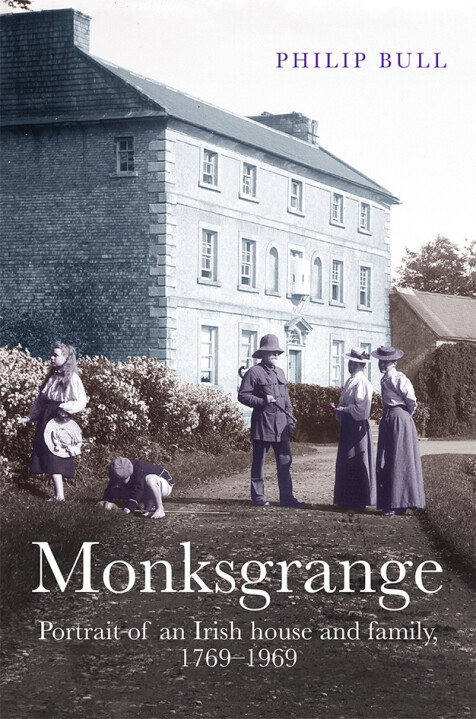Monksgrange
Portrait of an Irish house and family, 1769–1969
Philip Bull
“Nestling in the Wexford foothills of the Blackstairs Mountains is Monksgrange, home of the Richards family and their descendants, and subject of historian Philip Bull’s most recent publication. Monksgrange: Portrait of an Irish Houseand Family, 1769–1969 follows the lives of eight generations of the family who resided at Monksgrange (known simply as “Grange” until the late nineteenth century). The three-storey neo-Palladian house was built by Goddard Richards in 1769 ... Following eight years of painstaking archival work, Bull was perfectly positioned to write this book, drawing on the knowledge afforded by his deep engagement with the collection. Monksgrange is an ‘“insiders” story’ and “the history of a house and its people rather than an estate” … Monksgrange was first published in 2019 to commemorate the 250th anniversary of the house’s completion. It provides readers with an excellent insight into the lives of those who were associated with the house. Given the size of the Monksgrange archives and the range of material held within them, this will not be the last that we hear of Monksgrange, but Bull’s work provides a fascinating introduction to this Wexford house and its people.” Rachel Murphy, Irish Literary Supplement, Spring 2021
“The destruction and decline of the Irish country house in the first half of the twentieth century due to debt, arson and neglect has yielded a rich vein of scholarly work over the past twenty years or so. The publication of this book by Philip Bull is another significant addition to that growing corpus … The survival of estate archives is often cause for celebration and, in the case of Monksgrange, it has provided the basis for this important study, which traces the story of an individual family and a house across 200 years. The survival of records alone does not mean that the story can be told, however, and the creation of this book was obviously no easy task. For the best part of a decade, Bull acted as archivist as much as historian, firstly sifting through this voluminous archive and imposing order on the documents. Then, over a number of years, he undertook the task of reading and interrogating the documents, shining light on and making sense of long-forgotten aspects of Monksgrange’s past … Although the story is essentially rooted in County Wexford, readers far and wide will take a deep interest in this book. The publishers, Four Courts Press, are to be complimented for the handsome production which contains more than seventy illustrations, including drawings, paintings and photographs of people who are mentioned throughout the history … Monksgrange twice survived being burned down: in 1798 and again in 1922. If it had not survived, its voluminous archive would almost certainly have been lost. As historians, we are thankful that the house was not destroyed, and thankful too to Philip Bull for this meticulous study.” Ciarán Reilly (Australasian Journal of Irish Studies. 2020)

